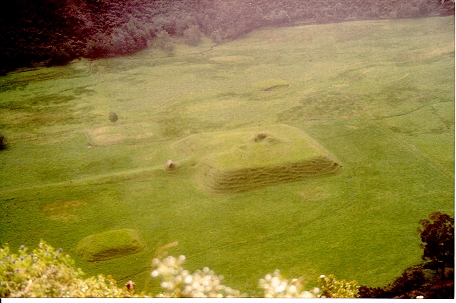 Resumen en Espanol
Resumen en Espanol
Department of Archaeology,
University of York,
King's Manor,
York,
YO1 7EP.
E-mail: ej_currie@totalserve.co.uk

The findings from two phases of archaeological fieldwork at Hacienda Zuleta, in the northern sierra province of Imbabura, Ecuador, provide the context for examining the evidence for the location of a major Late Period Caranqui chiefdom at this important ramp-mound site. The fieldwork has established the first unequivocal evidence for the presence of intensive raised field agriculture (camellones) here, capable of sustaining the high population densities postulated for the region during this period. The impact of potentially catastrophic events upon the subsistence basis for such a site and their wider socio-political implications are discussed with reference to the finding of tephra deposits identified as deriving from the eruption of Quilotoa volcano in c. 800 BP. New radiocarbon dates provide further clarification for the chronology of this major volcanic episode, now believed to determine the start of the Late Period in Ecuador's northern sierra.
Go to Table of Contents
© Internet Archaeology